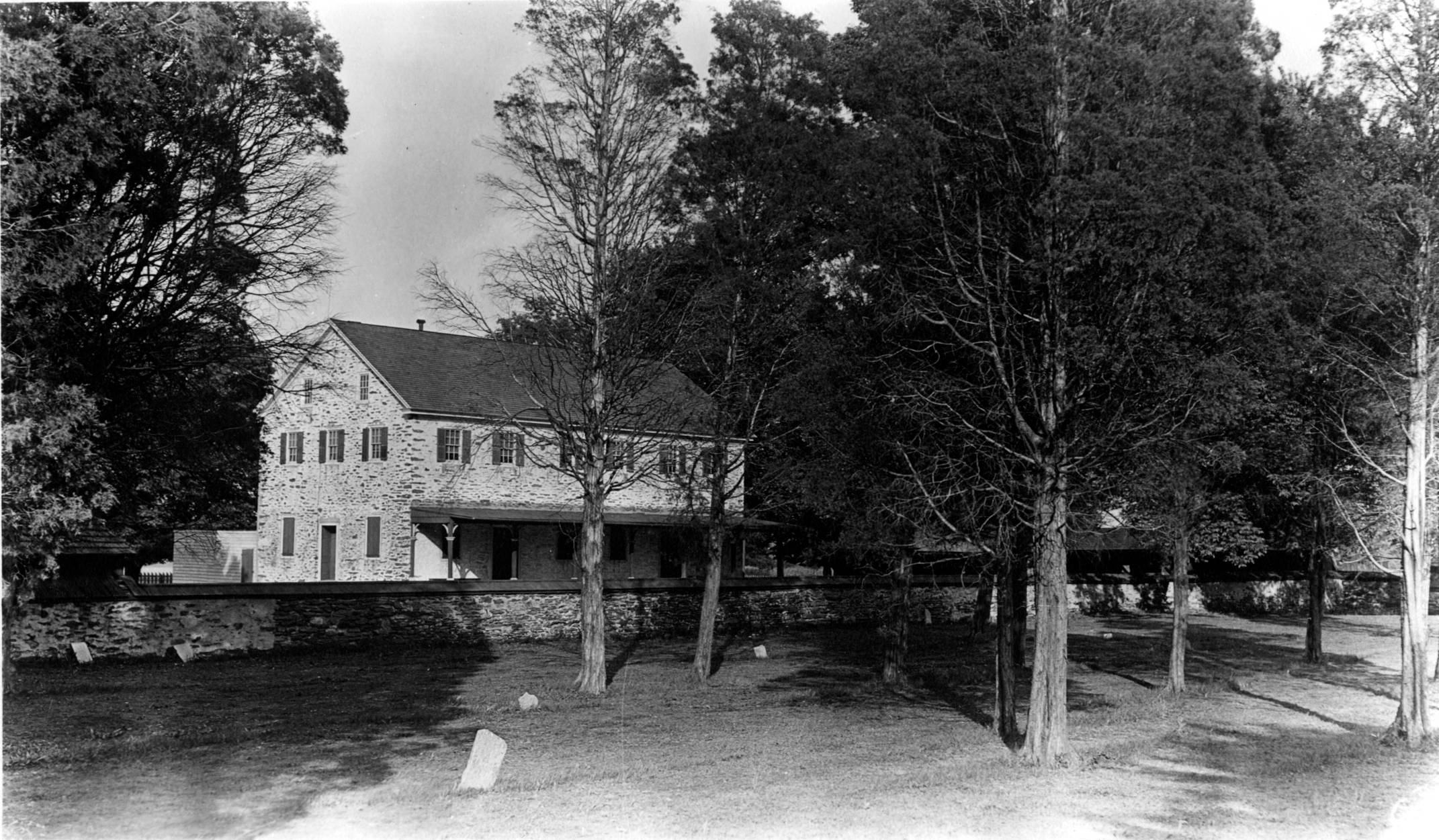Byberry Meetinghouse

The present Meeting House is the third on the property. The first was constructed to the north of the burial ground in 1694. It was a small log structure that only lasted about twenty years before a stone building as constructed in 1714.
Due to the quickly expanding population, that meeting house required an addition by 1753. The township continued to grow with the majority of the residents being members of the Meeting.
In 1800, the Township had a population of 579. In just ten years, it grew to 765 of these more than half, 446, were members of the Meeting. Outgrown, old stone meeting house was demolished in 1808 and the present Meeting House constructed.
Given that meeting houses were not an original feature of the Friends, there was no standard form for the building except simplicity. Differing from many religions, the Friends have no central hierarchy, Quaker Meetings govern from the small to the large. In other words, a Monthly Meeting has more influence over its Meeting than the Quarterly and the Quarterly more than the Yearly. Therefore, traditionally individual Monthly Meetings chose the form of building. This created a great deal of variation. In England, this has remained the case. Although, American Quaker’s experimented with different forms for the “Meeting House", by the middle 18th century a preferred form had developed.
Initially, the Meeting Houses tended to be one room to hold both Meeting for Worship and Meeting for Business. The men’s and women’s Meeting for Business oversaw different subjects for the Meeting, having only one room was difficult two separate Meeting for Business. Eventually many meeting houses constructed an addition of a separate room for the women’s Meeting for Business. However, this was felt to be unequal; after Meeting for Worship the women had to leave the room to go to their space.
In the early to mid-eighteenth century the Quaker’s were suffering from the influence outside forces. The Philadelphia Yearly Meeting reacted by updating the Book of Discipline and becoming much more involved in the Quarterly and Monthly Meetings. The new the Book of Discipline preached strict regulations within the Monthly Meetings that had to be monitored closely by the Yearly Meeting. During this time, it became clear that one of the primary outside influences, and subsequent lapse in values, was marrying outside the Friends. This act became reason for Disowning (expelling) the Member. The Men’s and Women’s Meeting for Business had always held separate roles; amongst the Women’s roles was the oversite of marriages. With so many members being disowned due to marriage outside the faith, the Women’s Meeting grew to have as much importance as the Men’s.
Equality between the Meeting for Business began to be reflected in the Meeting House form and was truly achieved in 1768 with the design of the Buckingham Meeting House. Although the size of Meeting Houses would vary depending on the population of the Meeting, this Buckingham form was repeated almost exclusively through 1830 and remained the prominent form through the late nineteenth century.
This form, referred to as the Double Meeting House or the Buckingham Model, created two chambers identical on both the interior and the exterior. Although the Meeting House was divided, the division wasn’t intended as an element of exclusion but two separate but equal chambers. The room is united during Meeting for Worship but, by closing a wooden screen in the center of the room, the Men’s Meeting for Business and Women’s Meeting for Business could be held separately and simultaneously. The Double Meeting House is quintessentially American and is a representation of the Americanism of the Quaker religion in which women are complete equals to men.
The Byberry Friends Meeting House is a quintessential example of the Double Meeting House. The plan created two chambers identical on both the interior and the exterior. It is a substantial meeting house of 36’-0” x 66’-0”. The overall appearance is unassuming and elegant in its simplicity. The only differences between the chambers at Byberry is that in the gallery of the Men’s side (the west side) a stair leads up to the attic and the side doors are in different bays. On the Men’s side, the side door is in the center bay. On the Women’s side (east), the door is in the north bay. On the women’s side this door led into an antechamber that provided access to the outside but also directly to the outhouse without leaving the building. The men’s outhouse was attached to the back of the Meeting House (north) at the northwest corner but there was no interior access.
The Byberry Friends Meeting House remains virtually unchanged and represents the equality of American Quakers.
Susan Vorwerk, 2/25/2020